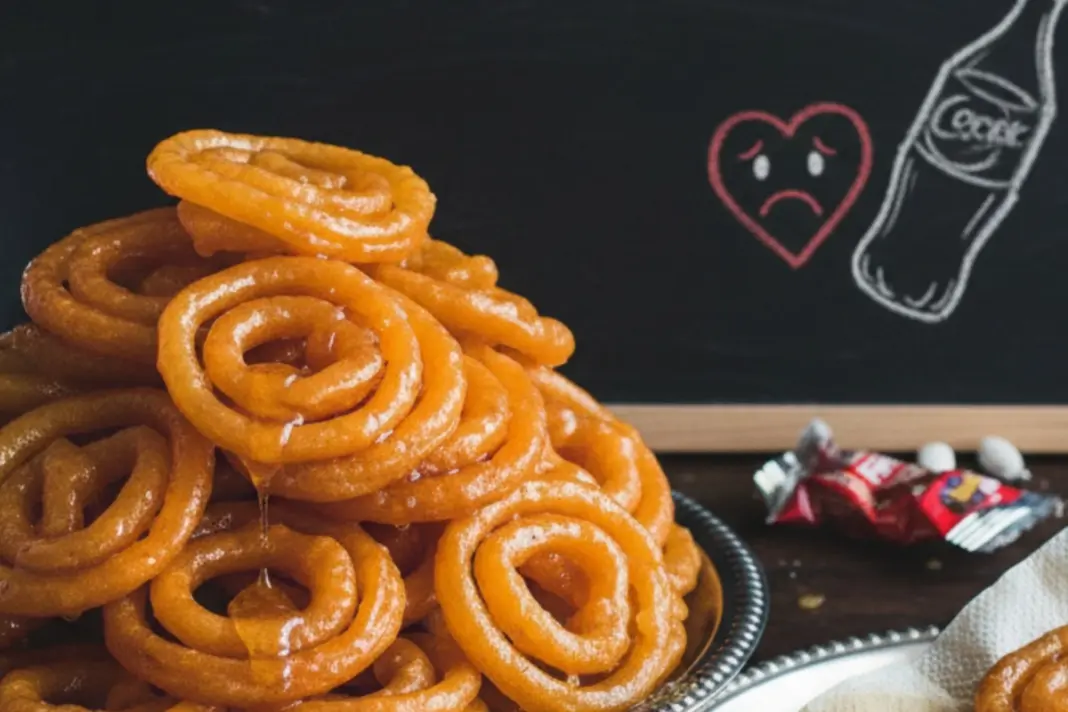If you love Indian sweets, jalebi is probably high on your list. Its crispy, syrupy texture and sweet taste make it irresistible. But have you ever wondered how healthy it really is? With so many indulgent desserts around, is jalebi the riskiest of them all? Recently, a Stanford-trained expert, Prashant Desai, shared some eye-opening insights that make you think twice before reaching for this popular treat.
Desai explains that jalebi’s reputation as a “high-risk dessert” is not entirely unfounded. Inspired by a news article claiming that India might add warning labels on samosas and jalebi, he decided to investigate. Although the news was later confirmed as fake, he was curious why jalebi was singled out. To find out, he bought jalebi from Brijwasi and sent it to an FSSAI-accredited lab to examine its nutritional content.
Nutritional Breakdown Of Jalebi
The lab results were shocking. Just 100 grams of jalebi contains 414 calories, making it extremely calorie-dense. About 70–75% of these calories come from carbohydrates, which quickly break down into glucose in the body and cause a spike in blood sugar. That’s roughly 300 calories from carbs alone.
On top of that, 100 grams of jalebi contains nearly 50 grams of sugar – the equivalent of 10 teaspoons. It’s fried in ghee, adding around 13 grams of fat, which contributes another 25–30% of its total calories. Desai warns that even a normal serving size of 50–100 grams is still very calorie-dense, making it a high-risk dessert for regular consumption.
How It Compares To Other Indian Sweets
Desai compared jalebi with other popular Indian desserts. Gulab jamun from Haldiram has almost the same calorie count (410 calories per 100 grams with slightly more sugar (52g) but fried in palm oil instead of ghee). Boondi laddoo contains 410 calories, 47g of carbs, 40g of sugar and 24g of fat.
Sugar-wise, laddoo is slightly better than jalebi, but fat-wise, it’s worse. Overall, all three desserts are calorie-dense and need to be eaten in moderation.
Tips To Enjoy Jalebi Safely
To enjoy these sweets without harming your health, Desai shares simple tips. Pair them with protein or fat, such as milk or dry fruits, to slow down sugar absorption. If you overindulge, taking a 15–20 minute walk after eating helps burn off excess glucose and prevents it from being stored as fat.
High sugar consumption can lead to obesity, liver fat, prediabetes, and diabetes over time. Desai emphasises that Indian desserts can be enjoyed if eaten mindfully and in moderation. His advice is to know what you’re eating, balance your sweets with healthier habits, and protect your health while still enjoying your favourite treats.
(Disclaimer: This content from DNP India is for general information only and not a substitute for professional advice. Always consult an expert before trying any suggestions, treatments or diets.)


